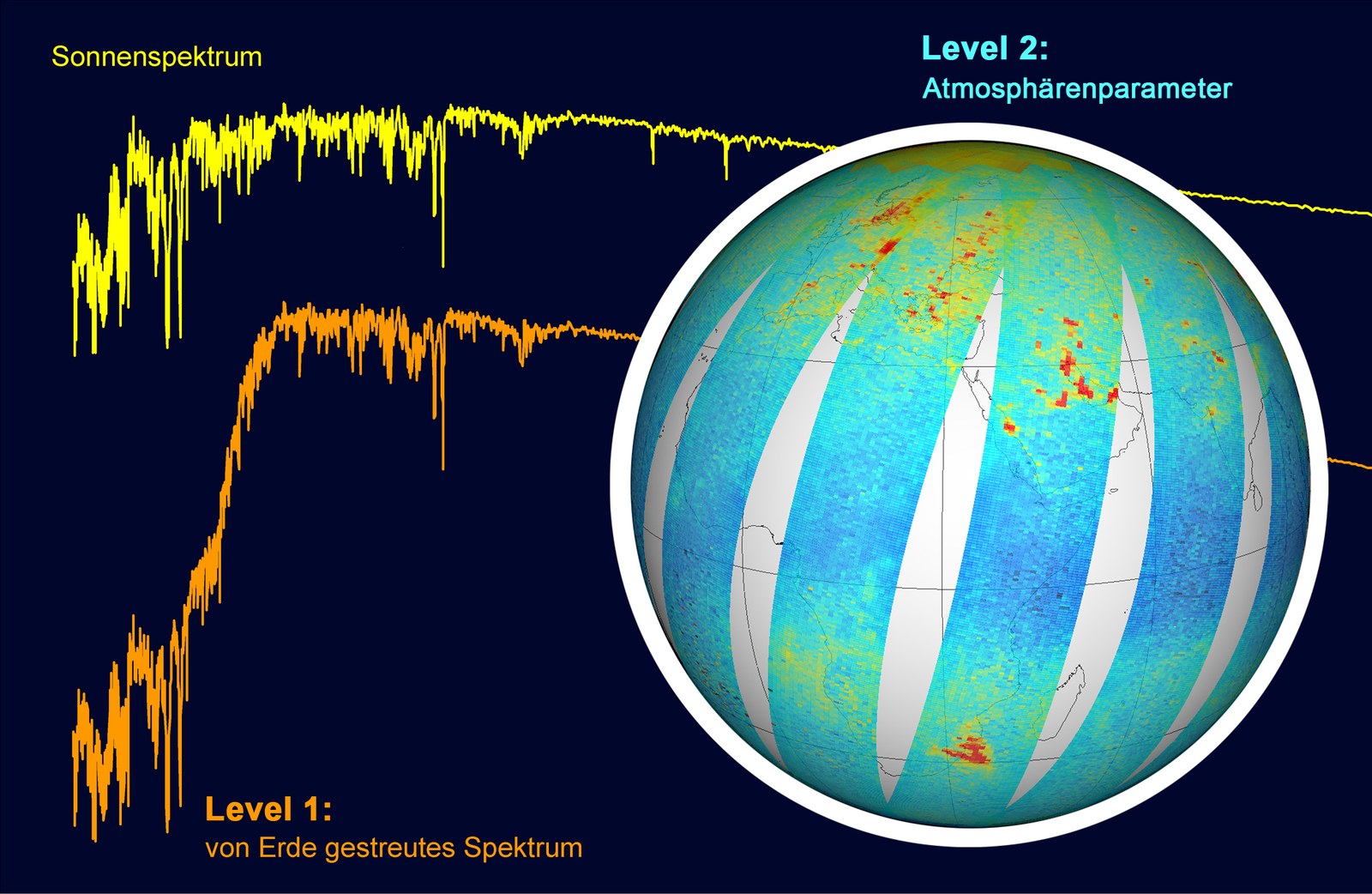Atmospheric Processors Departement
The Atmospheric Processors department derives geophysical atmospheric parameters from remote sensing data. These data have been gathered primarily from satellite-borne instruments but the approach is also applicable to data from other types of remote sensing instruments. Of the geophysical parameters, the focus is on trace gas concentrations and characterizing clouds and aerosols, but pressure and temperature parameters are also subjects of investigation. Future instruments will make it possible to determine wind parameters as well.
The department’s expertise in analyzing remote sensing data on the atmosphere covers the entire range from raw satellite data (Level 0) to their calibration (Level 1) to derived atmospheric parameters (Level 3). Retrieval, or determining atmospheric characteristics, calls for considerable understanding of radiative transfer, inversion and scattering. To obtain this knowledge, basic research is carried out with the goal of developing procedures and methodologies for highly precise derivation of known atmospheric state variables as well as extending their application to parameters which have up to now been inaccessible in remote sensing data. This work is relevant for both absorption and emission spectroscopy. The former concerns ultraviolet through visible to shortwave infrared wavelengths, the latter the infrared range.
The quality of the derived parameters depends not only on the capabilities of the retrieval procedures but also on the quality of the input data, the calibrated spectra. Therefore, rigorous attention is paid to calibrating the raw data in order to guarantee that the required retrieval precision can be achieved. Calibration corrects artifacts caused by the instrument, so that the measured spectra reflect to the extent possible the actual spectra scattered, reflected or emitted by the earth. Detailed knowledge of the construction and functioning of satellite-borne atmospheric instruments is accordingly essential. In the case of SCIAMACHY on ENVISAT, this understanding is also used to assure operation of the instrument over the entire life of the mission.
In order to be able to continuously generate atmospheric products from remote sensing data in the ground segment, the chosen retrieval methodologies need to be coded into algorithms which run as rapidly as possible. These algorithms, when combined with control and monitoring software, constitute the operational processor. Algorithm and processor development is accordingly undertaken to meet the requirements of specific mission operator and users, and the department is responsible for the scientific and technical content of the operational processors installed in the ground segment.
The Atmospheric Processors department cooperates with national and international institutions active in atmospheric remote sensing and climate monitoring. Its staff members are integrated in numerous current and planned projects whose results contribute decisively to understanding the atmosphere of System Earth.

